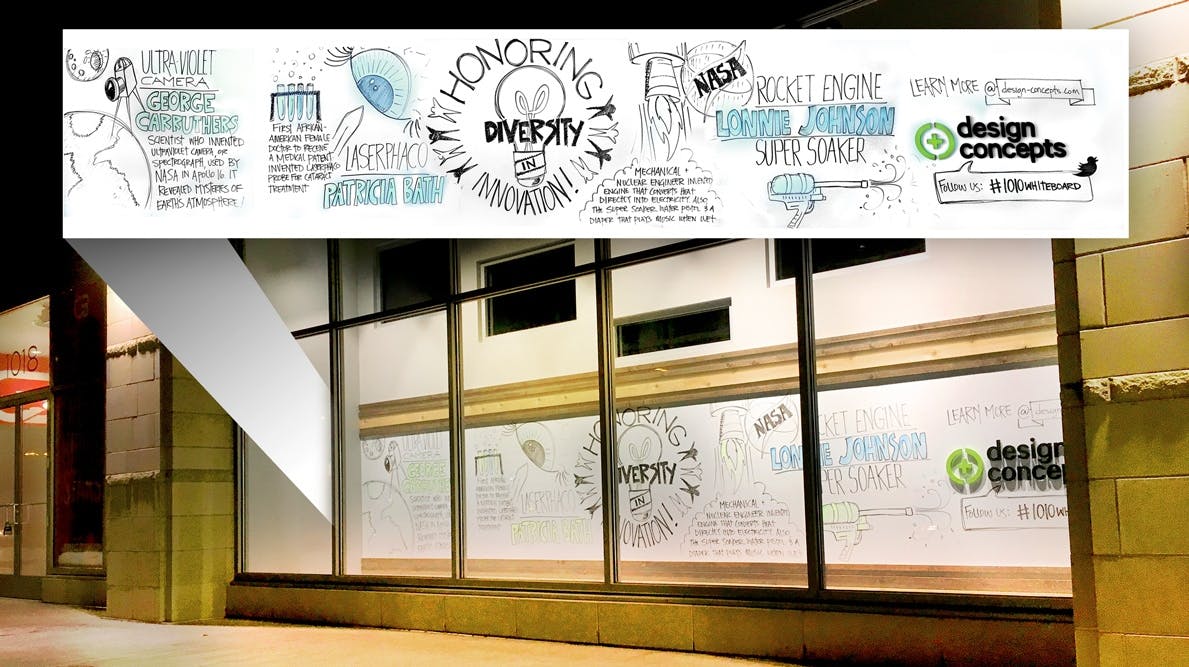What's in a whiteboard? More than you might think
We have a tradition of using the humble whiteboard as a jumping off point for discussions both internally and with the community.
What's in a whiteboard? More than you might think
There are very few things I miss about our former home at Buttonwood Drive in Madison ... except for the employees-only bathroom
Our new space is beautiful, central to the city, and allows many of my colleagues the opportunity to bike and walk to work. So let me clarify: we share multi-stall bathrooms with other tenants on our floor and that's fine. But it meant the end of the bathroom whiteboard. On it, people would post sometimes deep and often silly questions. In the privacy of the privy, people's answers were largely anonymous and sometimes a reflection of a co-worker's id. There were some great discussions on that whiteboard.
When we were trying to decide what to do with the wall in front of our new model shop that faces onto the car and pedestrian traffic of East Washington Avenue, there were a lot of ideas. A big display of some of the products we've designed? Some high-tech display with video? There were many cool ideas – some more time- and budget-friendly than others. But we settled on our whiteboard tradition and decided to start a conversation with the neighborhood.
We started with an introduction of our company, what we do and who works here. Then we did a board of a holiday journey map highlighting the wide variety of traditions that many of us celebrate. These designs are done by our wonderful Visual Communications team of Corin Frost and Shelby Floyd.
This month, in recognition of Black History Month, our board celebrates diversity in innovation. We honor George Curruthers, inventor of the spectrograph; Patricia Bath, the first black woman physician to receive a medical patent (for a probe used in cataract treatment); and Lonnie Johnson, who invented both rockets for NASA and the Super Soaker water gun (and 80 other patented inventions). Thanks to Shelby for taking this idea and running with it.
With a glass wall and hundreds of cars passing by each day, this isn't exactly the bathroom whiteboard where we shared what podcasts we're addicted to or what we hate most about winter. It's a very public forum. But it gives us an opportunity to interact with the neighborhood using the best of old- and new-school tools.
The whiteboard fits in with our After Hours presentations, where we invite clients and the community in for discussions around design, our involvement in the Madison Maker Faire, and the many school groups we host both in Madison and San Francisco.
And it feels right to celebrate inventors and trailblazers. Hopefully, we can make people stop and think (or simply learn something new) with our whiteboard. After all, that's the fodder for fresh ideas and innovation, which is our business in a nutshell.
